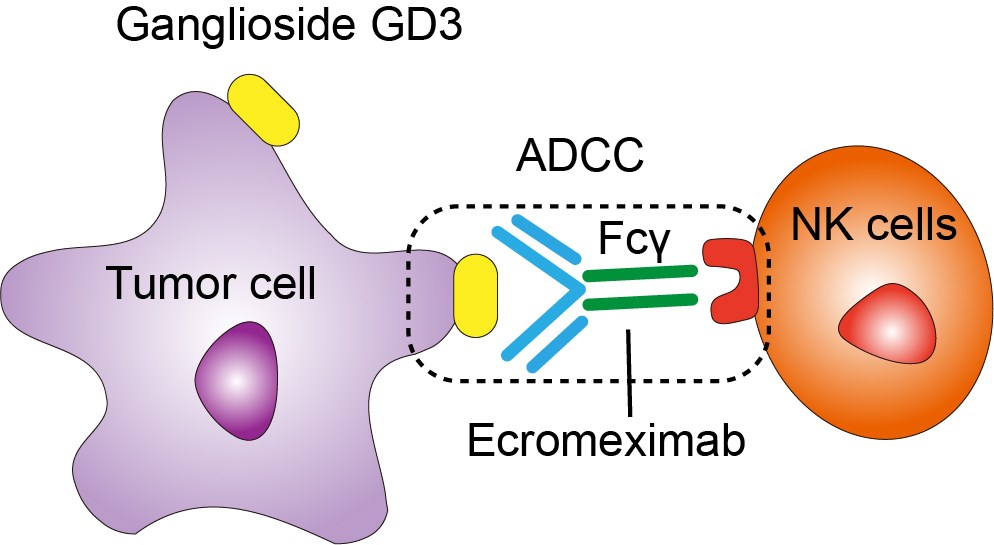Ecromeximab Overview
Introduction of Ecromeximab
Ecromeximab, also known as KW2871, is a humanized monoclonal chimeric antibody targeting ganglioside GD3 for the treatment of malignant melanoma. Malignant melanoma is a tumor produced by melanocytes in the skin and other organs. The incidence of malignant melanoma is low, but the mortality rate is high. This antibody is an engineered monoclonal antibody and composed of the variable region (Fv region) of mouse IgG3 antibody fused with human Fc fragment. Ecromeximab has attracted much attention because of its anticancer activity. In 2005, researchers evaluated the immune characteristics of ecromeximab in a trial of the treatment for metastatic melanoma. The results showed that there was no significant change in the complement dependent cytotoxicity (CDC) and antibody-dependent cellular cytotoxicity (ADCC) in the patients, indicating that this drug has the potential to treat metastatic melanoma. In 2006, a phaseⅠtreatment study of ecromeximab was carried out, and urticaria was found to be the most common side effect in the treatment. A study on the treatment of ecromeximab combined with high-dose interferon-A2b was carried out in 2012, but the combined treatment was discontinued in the united states in 2014. A report published the clinical results of ecromeximab combined with high-dose interferon-α2b (HDI) in the treatment of metastatic melanin tumors in 2017. The results showed that the combined treatment had good tolerance and low immunogenicity, but the clinical activity was limited.
Mechanism of Action of Ecromeximab
Ecromeximab has been developed as a therapeutic antibody for metastatic melanoma and has been designed as a chimeric antibody to reduce the immune response that may be induced by Fc fragments in mice. The antigen binding region of this engineered recombinant antibody can bind to ganglioside GD3. Ganglioside GD3 is a subtype of ganglioside, which is composed of hydrophilic sialic acid oligosaccharide chain and hydrophobic ceramide. It has been found that ganglioside GD3 is closely related to the occurrence and development of a variety of tumors, such as melanoma, and can promote the proliferation and metastasis of tumor cells through a variety of signaling pathways. Ganglioside GD3 is mainly expressed in the early stage of nervous system development. It is the main component of nervous system cell membrane and is mainly responsible for regulating the function of intramembrane proteins. The anti-tumor mechanism of chimeric antibody ecromeximab is to kill the bound tumor cells which expressed ganglioside GD3 through the antibody-dependent cytotoxicity induced by Fc region. Ganglioside GD3 negative cells had no killing effect.
 Fig.1 Mechanism of Action of Ecromeximab
Fig.1 Mechanism of Action of Ecromeximab
For research use only. Not intended for any clinical use.
This site is protected by reCAPTCHA and the Google Privacy Policy and Terms of Service apply.



